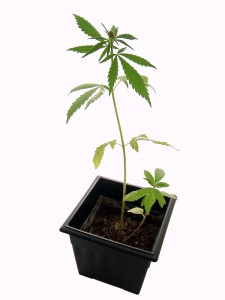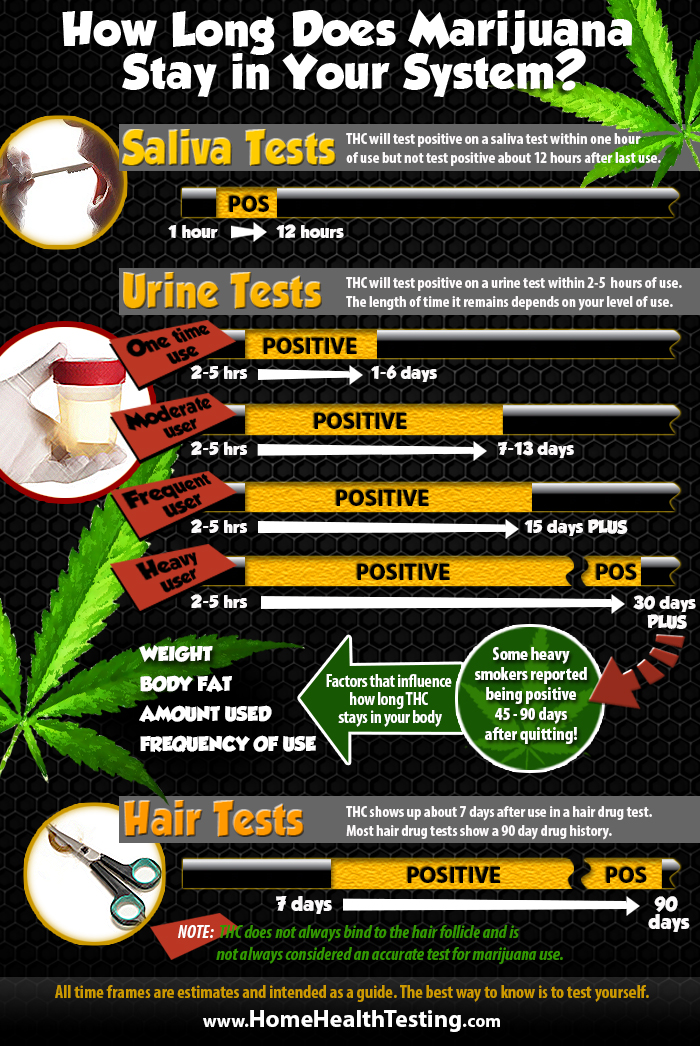Marijuana has joined the ranks of the human genome* and the creatures of Jurassic Park in having its DNA sequenced. This means that the biological code of marijuana has been completely revealed, which may offer valuable insights for scientists interested in isolating its positive features. Read More
Will A Shotgun of Marijuana Show Up On A Drug Test / Screen?
We’ve been getting a lot of questions lately about “shotgun” hits of marijuana. People want to know if they will show up on a drug test. The short answer is yes.
First, what are shotgun hits of marijuana? A shotgun is when you inhale marijuana and then exhale it into someone else’s mouth. If you are the one taking the second inhale, or in other words the person inhaling from someone else’s mouth, you are the one receiving the shotgun.
So you might wonder, “okay, I didn’t directly take a hit. Maybe it won’t show up on the test.” Or, “Maybe it’s like second hand smoke.” But…
Actually taking a shotgun hit is like taking a very concentrated hit – it’s comparable to taking a bong hit as opposed to smoking a joint. It’s reviahome very potent and contains a lot of THC. Second hand smoke is just ambient – the THC dissipates into the air rapidly. That’s why second hand smoke doesn’t appear on a marijuana drug test.
Regardless of whether you are inhaling from a joint, paraphernalia, or someone else’s mouth, if you are intentionally inhaling marijuana smoke and/or getting high, you are probably going to show up on a urine drug screen for marijuana.
For more reading please check out Does Secondhand Marijuana Smoke Show Up On A Drug Test. Or check out our marijuana drug test kit product page. Our test is used by companies all over the USA to screen employees for marijuana use and meets suggested initial testing levels. For those who wish to test themselves or others, it’s a good choice.
Drug Detecting Dogs: Not So Effective After All?
Drug sniffing dogs are a popular icon in the War On Drugs, seen walking around airports or riding around in a K-9 squad car. They reinforce our notion that dogs are man’s best friend. Whether or not they reliably succeed in the task of detecting drugs is another question.
The Chicago Tribune came out with an analysis yesterday of three years’ worth of data on drug sniffing dogs’ effectiveness. The news was not great – the dogs were more often wrong than right when they alerted officers to search a car for drugs and/or paraphernalia. Over 3 years, only 44% of alerts led to a successful finding of drugs/paraphernalia; if the driver in question was Hispanic, the success rate dropped to 27%. (You will be relieved to know our tests are much more accurate, 98% accurate in fact – see our marijuana drug test for more information).
You may wonder then if this proves to be a violation of the Fourth Amendment, which is in place to protect against unreasonable searches and seizures. What might surprise you even more is that there is almost no regulation of the process by which the dogs are certified and trained. Supporters of the drug-sniffing dogs view this as one of the main problems and an important reason for the less than impressive stats. Other issues include the fact that the dogs may be sniffing residue rather than drugs when they go into false alert mode.
While it’s good that the dogs can sniff out drugs, it’s clear that more training must be done to make sure that they do effectively and without bias. A complete search of a car done without merit is a waste of time and resources and a source of humiliation for the person subject to it. Hopefully this story will draw attention to the issue and lead to improvements where needed in dog detection programs.
More Teens Smoke Pot Than Cigarettes: So Says New Monitoring The Future Study Out Today
In a remarkable study published today by the National Institute on Drug Abuse, it was found that among 12th graders more report past-month marijuana use than they do cigarette use. This is the first time this has happened since 1981.
The new statistics are found in this year’s Monitoring the Future survey. The study comes out every year. The exact finding was that 21.4% of 12th graders used marijuana in the past 30 days, compared to 19.2% who smoked cigarettes.
Other interesting findings include that general past year drug use among 8th graders rose over the past year by 1.5% to 16%. Use of ecstasy increased, most drastically among 8th graders, where use almost doubled. Prescription drug abuse stayed generally the same (although use of Vicodin decreased among 12th graders). One bright spot is that teen binge drinking appears to be decreasing. Among high school seniors, 23.2% met the requirements of a binge in the past two weeks (5 or more drinks in a row). This is two percentage points less than in 2009 and far below the high for binge drinking in 1998, which was 31.5%.
What does this really tell us? Is decreased alcohol use among teens “worth” increases in marijuana use? Can we even say that it works like that (probably not!)? Some experts are contributing the increase in marijuana usage among teens to mixed messages being sent about whether marijuana is generally medicinal or not. It may also have to do with the fact that marijuana use is decriminalized in parts of the United States. Perhaps this will make families and employers more inclined to screen with a marijuana drug test kit. In any case, as usual these statistics will attract attention and cause those on both sides of the pro/anti drug debate to reflect on our culture today – what is the best way to handle teens’ curiosity about drugs and how can we best keep kids safe?
Q & A: What Is The Difference Between Pot and Hash?
Q: I am a parent and I often hear my kids talking about pot and hash. I always thought that they were synonymous. Is there a difference between the two?
A: Your suspicions are correct. Pot and hash are often considered to be interchangeable terms. There are lots of similarities but the reality is that there is also a slight difference between the two.
Let me explain. Both are derived from a genus of flowering plants known as cannabis. However, there are three putative species in the cannabis genus: Cannabis sativa, Cannabis indica, and Cannabis ruderalis. The natural habitat of all three is Central and South Asia.
Both pot and hash provide a high from the THC content in the plant. While both can be smoked or eaten, the THC content determines the potency of different forms in which it is used.
The herbal form consisting of flowers, leaves and stalks of female plants and the products developed from it, regardless of use, is known as marijuana and is the most widely consumed form of cannabis. The THC content in marijuana differs according to the specific species of cannabis used and may vary from 3-22%. Cannabis strains used to make industrial hemp have as little as 1% THC.
The resinous form of cannabis is known as hashish or hash. Hash is made from resin produced in the flowers of cannabis. Depending upon purity, it is either golden brown or black and normally more potent than marijuana. Powder made from trichomes, hair on the surface of the leaf or stem, is known as Kief. It is compressed into cakes of hash or consumed in powder form.
Hash oil is another form in which cannabis is used. This is resin extracted with solvents and concentrated as thick oil. Hash oil may have 60% THC content or even more.
What is referred to as pot in the US is the result of resin, leaves and stalks all chopped up and mixed. This results in a lower potency. Hash is just the resin of the cannabis plant, pressed and made into cakes and is more potent than pot. Sensemilla, which is pot without seeds, can be as potent as hash.
The main ingredient in pot as well as hash, THC, acts upon the nervous system and has short term effects that include panic attacks, extreme paranoia and anxiety. Long term effects of marijuana are not very clear. Marijuana is also priced for its medicinal value. It is effective in the treatment of nausea and vomiting and relieves mild pain. It is known to increase appetite in AIDS patients and also those undergoing treatment with chemotherapy. However, it should be consumed only moderately to avoid unpleasant side effects.
Marijuana is the least harmful among recreational drugs. However, there are different factors that influence how long THC remains in your system. The result of a marijuana drug test depends largely upon the amount of marijuana consumed by the user. For accurate and correct results it is imperative that a dependable marijuana drug test is used.
– Anne Hamilton
How Long Does Marijuana Stay In Your System?
 There are many people who ask the question “how long does marijuana stay in your system?” Unfortunately, the answer to this question is not simple and straightforward, the fact is that if you want to use a drug test effectively, it is a question that requires an answer.
There are many people who ask the question “how long does marijuana stay in your system?” Unfortunately, the answer to this question is not simple and straightforward, the fact is that if you want to use a drug test effectively, it is a question that requires an answer.
So let’s cut through the misinformation on the Internet and provide one!
Before we understand the period of time that marijuana lasts in the system, there are a couple of facts that you should know.
– The presence of marijuana is detected by a drug test through the presence of the active chemical THC or Tetrahydrocannabinol. Technically, what is detected is known as THC-COOH (11-nor-delta-9-tetrahydrocannabinol-9-carboxylic acid).
– The time that marijuana stays in the system depends on the amount of marijuana intake and the frequency at which it is consumed.
– When you smoke marijuana, your body breaks it down like it would anything else. The products of this breakdown are known as metabolites. The main metabolite of marijuana is THC-COOH. THC-COOH can be stored in the body in fat if you’ve consumed more than your body can get rid of at a given time.
– If you consume marijuana continuously, your system will be sort of “overloaded” with THC-COOH (which is not to say that you’ll be continuously high). Some of that THC-COOH will be stored away in the fat since the body can’t get rid of it. This means that the THC-COOH will be present in the system for much longer, as the body will have to play catch up at getting rid of the THC-COOH. Think of it as the difference between eating a peanut butter sandwich and a KFC Double-down. Both count as one meal, but one has far more calories and fat content. Since the body can’t use the calories and fat content it’ll store them away. Same with THC-COOH and someone who smokes a lot of marijuana.
– Marijuana drug testing can be conducted using saliva, urine, hair and sometimes blood as the sample.
– The specific window that you need to check for marijuana consumption depends on whether you are checking on someone who has tried for the first time or if you are testing someone who smokes a few times a week, or someone who smokes daily.
How Long Does Marijuana Stay in Saliva?
Marijuana does not stay in saliva for very long. Most of the rules that apply to marijuana’s detection time in urine and hair do not apply to marijuana in saliva. It can be detected by a saliva drug screen about an hour after intake. The accuracy of a saliva drug test (97%-98%) will decrease rapidly about 12 hours after the marijuana was consumed. So while a saliva drug test option may be useful if you want to find out if someone is high or if they were smoking yesterday, it is not an effective test for long term or less recent use.
How often someone smokes marijuana (for example, every day for 6 months, or just once) has no bearing on the results of a saliva drug test.
How Long Does Marijuana Stay In Urine?
The amount of time marijuana can be detected in urine depends on the amount and frequency of its consumption. Marijuana can stay in the urine for up to two months in cases of very frequent, prolonged use. Basically, the more you use marijuana, the longer it will remain in your urine. If you have just tried marijuana, for example, and that was your only use, it will probably be out of your urine within a week.
Those who kick the habit after consuming the drug almost daily can still have THC traces in the urine for a month or longer.
Be sure when testing to wait for about 2 to 5 hours after consumption or last suspected conception for THC to appear in the urine though.
How Long Does Marijuana Stay In Hair?
When smoked, marijuana enters the bloodstream and as the blood nourishes the hair, the drug gets into the hair follicles too. As the hair grows, the hair follicles contain traces of THC that can confirm the intake of marijuana. THC can show up in hair about a week after consumption (it takes the hair bearing traces of THC that long to emerge from the scalp).
Drugs take a long time to deteriorate in the hair and therefore testing can be done many days after consumption. A standard laboratory will check up to 90 days but a court or another law enforcing institution can have hair analyzed for more than 3 months as well. Special arrangements can usually be made with laboratories if inquiries are made.
While hair drug testing provides a good opportunity to confirm whether someone has been on marijuana, and has the largest detection window, the issue is that this drug is not one of the easiest drugs to hair test. THC, when it’s in your body, does not always bind successfully to the hair follicle. Therefore, it is possible that a semi-frequent user may get a negative reading on a hair follicle drug test while someone who had it just once a couple of weeks back may get a positive result. It is a bit of a toss up. The hair follicle drug test is therefore not considered to be as reliable for marijuana as it is for other drugs like cocaine (and for drugs like cocaine, and all other drugs tested for in a standard consumer hair drug test, hair follicle drug testing is actually found to be better at catching drug use than urine tests).
So while the question “how long does marijuana stay in your system” is a pertinent and popular one, there are all of the above factors to consider before an appropriate and correct answer can be given. Even though there is all this discussion about the whole question, if you are concerned, the best thing to do is to just go out there and purchase a home drug test and check out whether you or someone else test clean or not.
(Check out our home drug test product line here! We carry all of the tests profiled above in the chart.)
– Anne Hamilton






